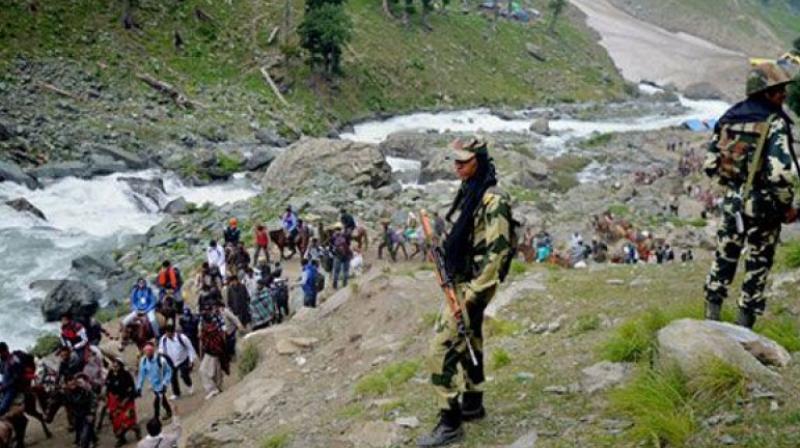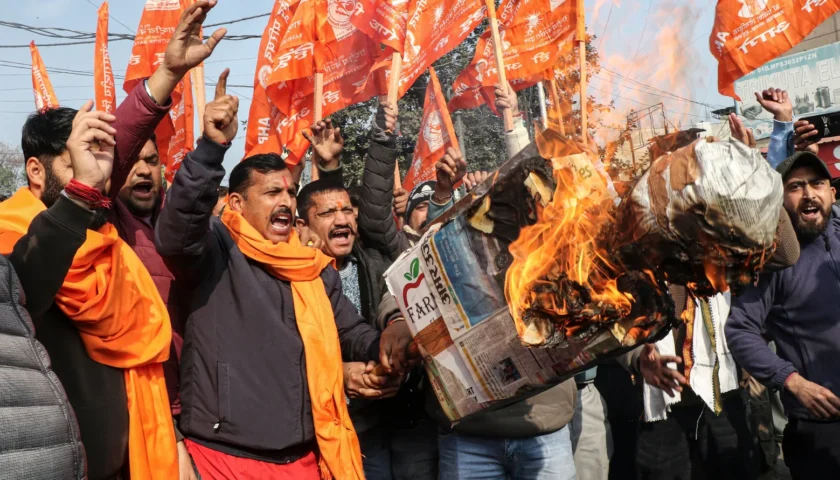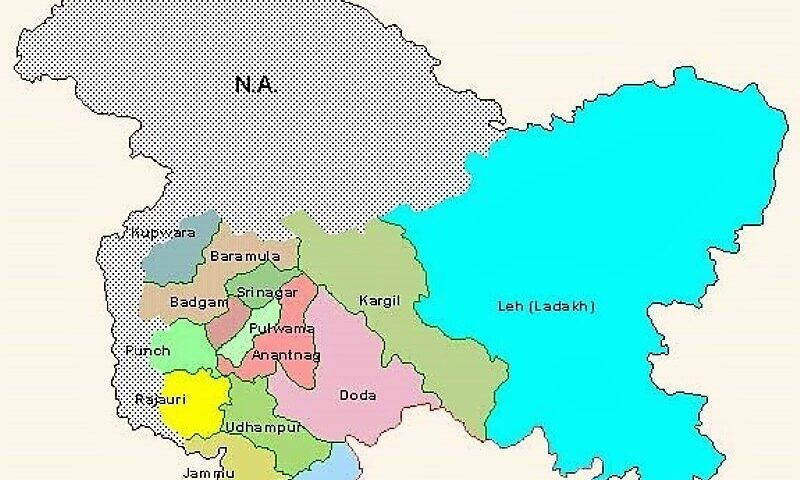Amarnath Yatra 2025 Security: Back-to-Back High-Level Reviews in Kashmir to Ensure Safe Pilgrimage
By: Javid Amin | Srinagar | 14 June 2025
The Sacred and the Secure
Every year, thousands of devout pilgrims trek through the rugged and majestic terrain of the Himalayas to seek blessings at the holy Amarnath Cave in Jammu & Kashmir. But this year, the journey to spiritual serenity is shadowed by heightened security concerns. With memories still fresh from the April 22 Pahalgam terror attack, the administration is racing against time to ensure a safe, secure, and seamless Amarnath Yatra 2025.
In just six days, over half a dozen high-level security review meetings have been convened—each focused, urgent, and deeply coordinated. These back-to-back sessions underscore the government’s resolve: faith must never be threatened by fear.
Why Amarnath Yatra Security Has Become a Top Priority
The Pilgrimage of Faith and Fragility
The Amarnath Yatra isn’t just another religious procession—it is an annual test of resilience, faith, and administrative coordination. Situated at an altitude of 12,756 feet, the Amarnath Cave is home to the naturally formed ice Shiva Lingam, attracting nearly a million devotees every year.
Yet, the pilgrimage route passes through some of the most volatile zones in the Kashmir Valley, making it a tempting target for militant groups and fringe elements.
The April 22 attack on a tourist vehicle in Pahalgam, barely months before the Yatra, jolted security agencies. The incident not only raised alarms about the safety of domestic and foreign pilgrims but also about the intelligence lapses and logistical vulnerabilities in the region.
A History of Threats and Tragedy
The Amarnath Yatra has seen repeated security threats over the past decades:
-
In 2000, a militant attack killed 30 pilgrims and security personnel.
-
In 2017, a targeted assault left 7 pilgrims dead and over 30 injured.
-
In 2022, security was ramped up following intel inputs of potential attacks by hybrid militants operating in South Kashmir.
The takeaway is sobering: the Yatra is sacred—but also sensitive.
Also Read | Reviving Tourism in Kashmir: Travel Agents Unite to Reboot Confidence
The Recent Review Marathon – What Happened?
Manoj Sinha’s Lead from the Front
Lieutenant Governor Manoj Sinha has taken a hands-on approach. He personally chaired a comprehensive, multi-agency security review attended by:
-
Top J&K Police officials
-
Army commanders
-
CRPF and BSF leadership
-
Shri Amarnath Ji Shrine Board (SASB) members
-
Civil administration officers from Kashmir and Jammu divisions
Sinha issued clear directives: every agency must work in unbreakable coordination, and pilgrim safety is non-negotiable.
What the Meetings Covered
-
Threat Assessment
Based on intelligence inputs from the IB, RAW, and J&K Police, the threat perception remains “high” in South Kashmir, especially along the Anantnag-Pahalgam and Baltal-Sonamarg axes. -
Deployment Matrix
-
CRPF battalions have been increased by 25% from 2024.
-
Army Road Opening Parties (ROPs) will be stationed at every 5-km interval.
-
BSF air surveillance units have been deployed for aerial threat detection.
-
Sniffer dogs, bomb squads, and mobile commando teams will accompany each Yatra convoy.
-
-
Anti-Sabotage Measures
-
Daily road clearance drills.
-
Electronic surveillance with drones and CCTV grids.
-
Anti-tunneling sensors at vulnerable points.
-
-
Emergency and Medical Preparedness
-
Over 80 medical camps with oxygen supplies and trauma care units.
-
Dedicated air ambulances stationed at Srinagar and Jammu.
-
Contingency evacuation protocols coordinated with the IAF.
-
-
Crowd Management and Route Control
-
Smart tokens with QR codes to track pilgrim movement.
-
RFID-based tracking for buses and horses.
-
Real-time traffic updates via the Yatra app developed by NIC.
-
Ground-Level Deployment and Security Layers
Multi-Layered Security Architecture
The entire Amarnath Yatra route has been divided into five security zones:
-
Outer Perimeter (Jammu-Srinagar Highway)
-
Heavy escort teams for all registered Yatra vehicles.
-
Highway barricading and drone patrols.
-
-
Transit Camps (Kathua, Samba, Udhampur, Anantnag)
-
24×7 patrolling by CRPF and local police.
-
Biometric verification and entry monitoring.
-
-
Base Camps (Baltal and Nunwan)
-
Fortified enclosures with metal detectors and frisking booths.
-
Night vision surveillance and sniper towers.
-
-
Trekking Routes to the Cave
-
Armed commandos stationed every 100 meters.
-
Horse-mounted patrols on narrow terrain.
-
-
Cave Shrine Premises
-
SASB coordination with army engineers for structural reinforcement.
-
Crowd barriers and emergency evacuation ladders installed.
-
Also Read | Kashmir Awaits! Exclusive Deals on Honeymoon, Family Vacations & Amarnath Yatra
Intelligence Inputs and Tactical Responses
From Tech to Terrain: How Intelligence is Guiding Action
Agencies are relying heavily on:
-
Human Intelligence (HUMINT) from South Kashmir operatives.
-
Signal intelligence (SIGINT) intercepts of terror group chatter.
-
Drone footage of vulnerable forested patches near the route.
The April 22 Pahalgam incident was reportedly carried out by a two-member hybrid module. Their infiltration route and escape pattern have led to new surveillance checkpoints being established.
Pre-Emptive Arrests and Raids
Security forces have arrested over 60 suspects in pre-Yatra operations:
-
Several were found with IEDs, arms, and satellite phones.
-
Joint raids in Anantnag, Kulgam, and Shopian are ongoing.
-
House-to-house searches in terror-prone villages have been intensified.
What Officials and Leaders Are Saying
LG Manoj Sinha
“We are committed to ensuring that every pilgrim experiences the divine peace of Amarnath without fear or disruption. Security will be uncompromising, and coordination will be total.”
DGP R.R. Swain
“Every possible threat scenario has been mapped. Our response systems are layered and responsive.”
Home Ministry Official (Anonymous)
“This is the most comprehensive security blueprint for Amarnath Yatra in two decades.”
What Pilgrims Can Expect in 2025
Safer, Smarter Yatra
New features for pilgrims include:
-
QR Code Yatra Passes linked to mobile phones
-
AI-powered crowd control algorithms
-
Live Weather and Landslide Alerts
-
Real-time bus tracking
-
Yatra Helpline (Toll-Free 24×7)
Pilgrim advice includes mandatory registration, health certification, and route adherence. Those deviating from official convoys will be denied access.
Also Read | Spiritual Serenity Meets Himalayan Majesty – Embark on Your Amarnath Yatra & Kashmir Adventure Today!
Socio-Political and Economic Angle
Boost to Local Economy
Despite security concerns, over 700,000 pilgrims are expected this year—a potential record footfall. The pilgrimage provides:
-
Seasonal employment to over 50,000 locals
-
Revenue to hotels, pony owners, tent managers, and transporters
-
Opportunities for community-based tourism
Political Implications
-
For the BJP, a smooth Yatra reinforces its image as a guardian of Hindu religious rights.
-
For the J&K administration, it’s a chance to showcase governance efficiency.
-
Any disruption would be politically and reputationally disastrous.
Bottom-Line – A Test of Faith, A Trial of Security
The Amarnath Yatra 2025 is not just a pilgrimage—it’s a powerful symbol of unity, resilience, and religious coexistence in a region long marred by conflict.
Back-to-back security reviews, coordinated agency efforts, and high-tech monitoring reflect a new security doctrine—one that doesn’t leave anything to chance.
And as the first batch of pilgrims prepares to embark on this sacred journey from July 3 to August 9, the message from the mountains is clear: faith will walk safely, even through fire.




